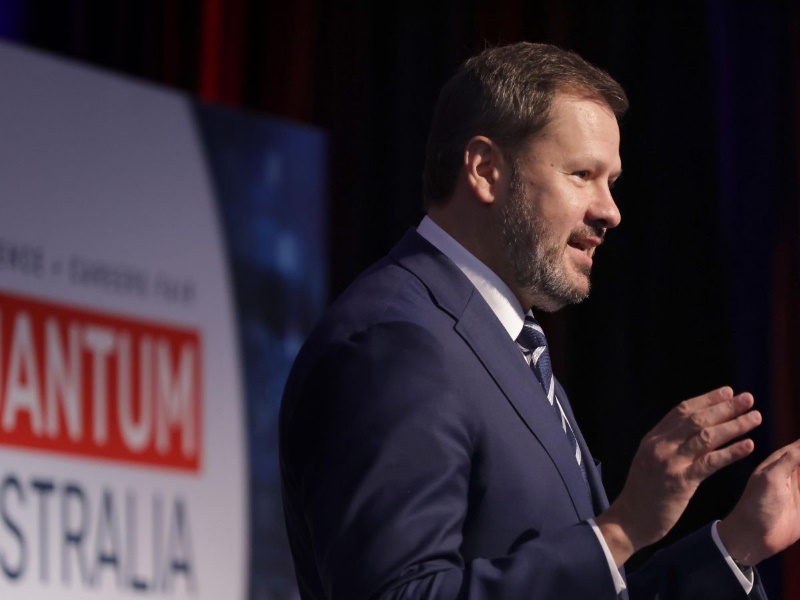Quantum firms are being offered grants of more than $5 million each to solve national challenges like optimising energy networks, improving medical imaging and reducing the impact of mining and mineral processing.
The challenges — and one more for enhancing communications with autonomous systems — are the first of the $36 million Critical Technologies Challenge Program (CTCP) opened by federal Industry and Science minister Ed Husic on Wednesday.
Competitive grants of up to $500,000 for feasibility studies over the summer are on offer in the initial stage, with a second stage offering up to $5 million more for selected demonstrators and proofs of concept from 2025-26.

The CTCP was announced in last year’s federal Budget, but only opened Wednesday.
The program aims to build collaboration between researchers and businesses, accelerate commercialisation, provide difficult to find capital for early stage companies and de-risk the adoption of quantum technologies for Australia’s traditionally strong sectors.
“Putting our world-leading quantum know how to work on our big national challenges will be a powerful demonstration of its value to the community,” Mr Husic said.
“This program is another way we’re accelerating the development and adoption of quantum technologies in ways that have a practical impact.”
The CTCP has broken with the typical light touch approach of federal industry grants by setting defined “nationally significant” market- led challenges.
The four nationally significant challenges are:
- Optimise the performance, sustainability, and security of energy networks to help the transition to Net Zero
- Improve medical imaging and medical sensors to support diagnosis, treatment of disease and monitoring activities inside the human body
- Enhance communication with autonomous systems in varying environments
- Optimise efficiency and reduce the impact of resource exploration, extraction, and mineral processing
Applications close in July, with feasibility studies set to begin in November and finish by May next year.
According to grant guidelines, the feasibility funding can cover the total cost of the project and will range from $100,000 to $500,000. Around $5 million in total is available for the feasibility studies, meaning there could be between 10 and 50 projects.
Successful feasibility studies will give the projects a chance at a second round of funding of up to $5 million each to demonstrate a project for another 15 months.
The department is expecting to run a second round of the program, which is funded until 2026-27.
Applicants need to be an entity incorporated in Australia with an ABN. International firms can participate as part of joint consortia bids.
Grant decisions are being made by program delegate based on the advice of a new Critical Technologies Challenge Program Assessment Committee.
Leaving the decisions to the department and the independent committee is also a break from the Morrison government approach to give ministers and in some cases the Prime Minister final say on Industry grants.
A quantum centre at the University of Sydney is also being funded by the federal government, with this initiative also announced in last year’s Budget.
Parts of the local quantum sector had been expecting new programs and government support in last week’s Budget after the government made an unprecedented investment in a foreign quantum computing firm in April.
No new quantum initiatives were announced, however, disappointing a sector that had wanted the public investment in PsiQuantum to be followed by more widely spread support like national test beds.
Other funding is available to quantum firms under the National Reconstruction Fund and Industry Growth Program, but neither specifically target quantum and no funding has yet been released.
The Tech Council of Australia acting CEO Ryan Black welcomed the program launch but said more government funding is needed.
“Further investment is essential to maintaining Australia’s leadership in the race to commercialising quantum technologies, which could deliver billions of dollars in economic value and thousands of jobs for Australians by 2030, while supporting our strategic and national security objectives.”
“Australia’s lead in quantum technology development is the result of strong government investment and support for decades,” Mr Black said.
Do you know more? Contact James Riley via Email.

